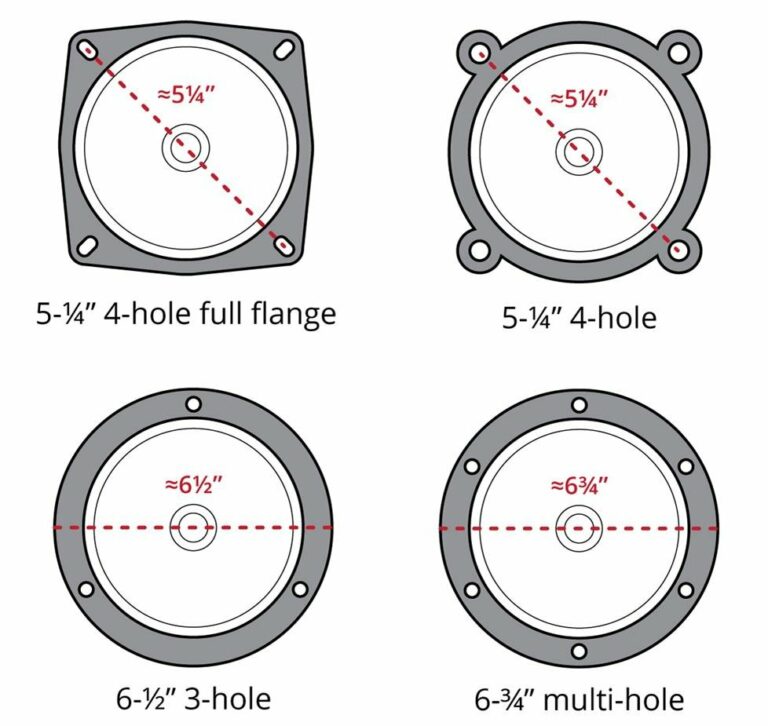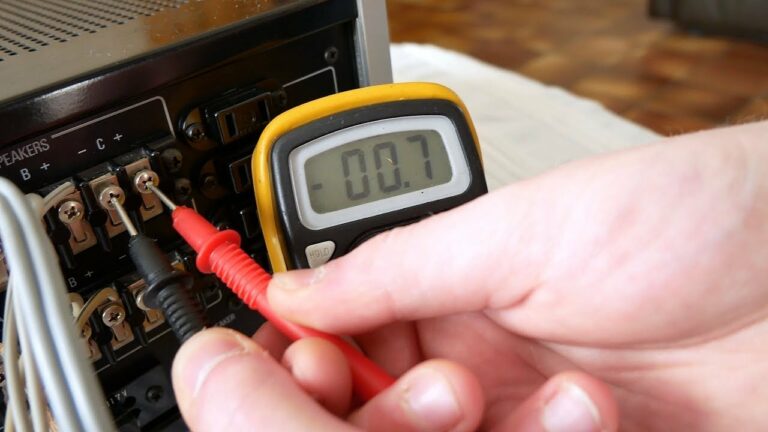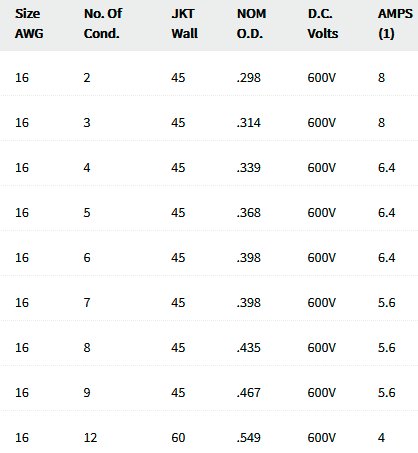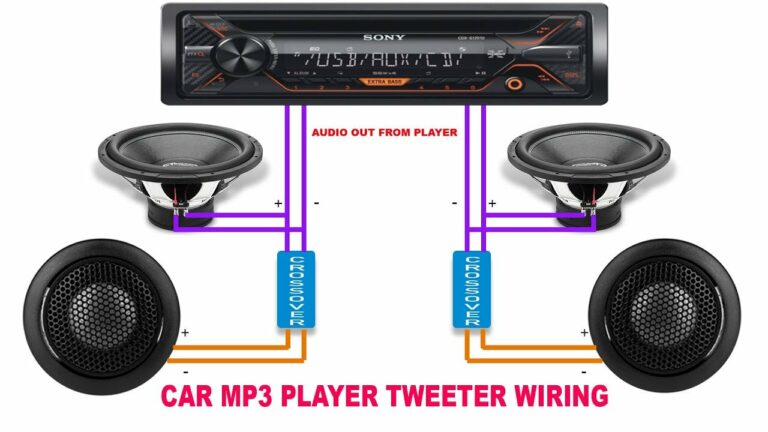Determining Speaker Size For Your Vehicle: A Simple Guide
Today we discuss Determining Speaker Size For Your Vehicle. We’ve got you covered! Finding the right speaker size for your car might seem daunting, but with a few simple steps, you’ll be able to enhance your audio experience effortlessly.
In this article, we’ll walk you through the process of determining the perfect fit for your vehicle, ensuring you get the best sound quality on the road. So let’s dive in and explore how to know what size speakers fit into a vehicle.
How to Know What Size Speakers Fit Into a Vehicle
When it comes to upgrading the audio system in your vehicle, one crucial factor to consider is the size of the speakers. Finding the right size speakers can be a daunting task, especially with the wide array of options available in the market. However, with a little knowledge and guidance, you can easily determine the perfect fit for your vehicle. In this article, we will discuss the steps to determine the appropriate size speakers for your car, truck, or SUV. Whether you are a car audio enthusiast or simply looking to improve your sound experience on the road, this guide will help you navigate through the process seamlessly.
1. Understanding Speaker Size
Before diving into the specifics of fitting speakers into your vehicle, it’s essential to understand a few key terms related to speaker size:
Impedance
Impedance refers to the electrical resistance offered by a speaker. It is typically measured in ohms. Most car speakers have an impedance rating between 2 and 4 ohms. It’s important to match the impedance rating of your speakers with that of your vehicle’s audio system to ensure optimal performance.
Sensitivity
Sensitivity refers to the ability of a speaker to convert power into sound. It is typically measured in decibels (dB). A higher sensitivity rating indicates that the speaker can produce louder sound with less power. When selecting speakers, consider the sensitivity rating to ensure they work well with your existing audio setup.
Power Handling
Power handling refers to the amount of power a speaker can handle without getting damaged. It is usually measured in watts. It’s vital to choose speakers with power handling capabilities that match or exceed the output of your car stereo or amplifier.
2. Research Speaker Compatibility
The first step in determining what size speakers fit into your specific vehicle is to do thorough research. Every vehicle has different speaker sizes, mounting depths, and configurations. Start by checking the owner’s manual or manufacturer’s website to find the speaker size recommendations for your vehicle’s make and model. Alternatively, you can explore online forums or consult with professionals in car audio stores who have expertise in fitting speakers into different vehicles.
3. Measure Speaker Openings
If you can’t find the speaker size information for your vehicle, measuring the speaker openings is the next best option. Here’s a step-by-step guide to help you:
- Gather the necessary tools such as a measuring tape and a flashlight.
- Remove the speaker grilles or panels covering the speakers in your vehicle.
- Measure the diameter of the speaker opening from edge to edge. This will give you the speaker size in inches.
- Measure the depth of the speaker opening from the mounting surface to the outermost point. This will determine the mounting depth required for the speakers.
4. Consider Speaker Placement
Understanding where you want to install the speakers in your vehicle is crucial. Different vehicles have varying locations for speakers such as the dashboard, doors, rear deck, or even the trunk. Consider the following factors when determining the placement:
- Factory Locations: If you prefer a straightforward installation, replacing the existing speakers in their factory locations is a logical choice. By doing so, you don’t need to worry about modifying the vehicle’s structure or drilling new holes.
- Sound Quality: To achieve superior sound quality, you may want to consider component speakers. These systems have separate tweeters and woofers that can be strategically placed for optimal sound staging. However, component speakers typically require more installation effort and modifications.
- Space Constraints: Depending on your vehicle’s size and design, there may be limitations on speaker size and mounting depth. Ensure that the chosen speaker dimensions and mounting requirements align with the available space.
5. Take Note of Wiring and Connectors
When replacing or upgrading speakers in your vehicle, it’s essential to ensure compatibility with your vehicle’s wiring and connectors. Some car manufacturers may use proprietary connectors or wiring harnesses. To simplify the installation process, look for speakers that come with adapter plates or connectors that can easily integrate with your vehicle’s wiring system.
6. Seek Professional Advice If Needed
If you’re unsure about the installation process or encounter difficulties along the way, it’s always best to seek professional advice. Car audio specialists or experienced technicians can provide valuable insights and guidance based on their expertise. They can help you identify any potential challenges and suggest suitable alternatives or modifications.
7. Test and Fine-Tune
Once you have successfully installed the speakers, it’s time to test and fine-tune your audio system. Make sure to:
- Ensure all connections are secure and free from any issues like loose wires or interference.
- Adjust the equalizer settings, balance, and fade controls to optimize the sound quality according to your preferences.
- Experiment with different genres of music to evaluate the speakers’ performance across various frequencies and audio dynamics.
8. Ongoing Maintenance
To ensure the longevity and optimal performance of your speakers, it’s important to perform regular maintenance. Here are some tips to keep in mind:
- Clean the speakers periodically using a soft brush or cloth to remove dust and debris.
- Avoid using excessive force when adjusting volume or bass levels, as it may strain the speakers.
- Protect the speakers from extreme temperatures and moisture by parking your vehicle in a covered area or using weatherproof speaker options if available.
By following these steps, you can confidently determine the appropriate size speakers for your vehicle and enjoy an enhanced audio experience on the road. Remember to consider factors such as compatibility, placement, and wiring to ensure a seamless installation. With the right set of speakers, you can transform your vehicle into a mobile sound system that delivers immersive and high-quality audio.
How to Measure for a Replacement Speaker.
Frequently Asked Questions
What factors should I consider when determining the speaker size for my vehicle?
When determining the appropriate speaker size for your vehicle, consider factors such as the available space in your vehicle, the existing speaker sizes (if any), and the compatibility with your audio system. Additionally, you should check the specifications of your vehicle’s audio system to ensure that the speaker size you choose is compatible with the power output and impedance requirements.
How can I measure the size of the existing speakers in my vehicle?
To measure the size of your existing speakers, you will need to remove them from your vehicle. Once removed, measure the diameter of the speaker cone from edge to edge. It is important to note that speaker sizes are generally measured in inches, so ensure your measurement is in the same unit.
Where can I find information on the speaker sizes recommended for my vehicle?
You can find information on the recommended speaker sizes for your vehicle in several places. One option is to consult the owner’s manual of your vehicle, as it may provide details on the recommended speaker sizes. Another option is to search online using your vehicle’s make, model, and year to find forums or websites dedicated to car audio enthusiasts who can offer recommendations based on their experiences.
Are all speakers compatible with all vehicles?
No, not all speakers are compatible with all vehicles. Different vehicles have different space limitations and audio system requirements. It is important to choose speakers that are specifically designed to fit your vehicle and are compatible with your audio system. This ensures proper installation and optimal performance.
Can I install speakers of a different size in my vehicle?
In some cases, it may be possible to install speakers of a different size in your vehicle. However, this may require modifications to the speaker mounting locations or the use of adapter brackets. It is recommended to consult with a professional car audio installer to determine the feasibility and potential implications of installing speakers of a different size in your specific vehicle.
What are component speakers, and are they compatible with my vehicle?
Component speakers consist of separate woofers, tweeters, and crossovers that offer improved sound quality and a more customizable audio experience. However, they may require custom installation and modifications to fit properly in your vehicle. It is advisable to consult with a car audio professional to determine the compatibility and installation requirements of component speakers for your specific vehicle.
Can I install speakers myself, or should I seek professional installation?
While it is possible to install speakers yourself, seeking professional installation is highly recommended, especially if you are not experienced in car audio installations. Professional installers have the expertise and knowledge to ensure proper installation, wiring, and integration with your vehicle’s audio system, resulting in optimal sound quality and performance.
Final Thoughts
To determine the appropriate speaker size for your vehicle, there are a few simple steps you can follow. Firstly, carefully measure the available space in your car’s doors or dashboard. Next, consider the power handling capabilities of your vehicle’s audio system. This will help you choose speakers that can work efficiently with the available power. Additionally, consult your vehicle’s owner manual or contact a professional for specific recommendations. By following these steps, you can ensure that the speakers you select fit perfectly and provide optimal sound quality in your vehicle. Understanding how to know what size speakers fit into a vehicle is crucial in achieving an enjoyable audio experience on the road.






